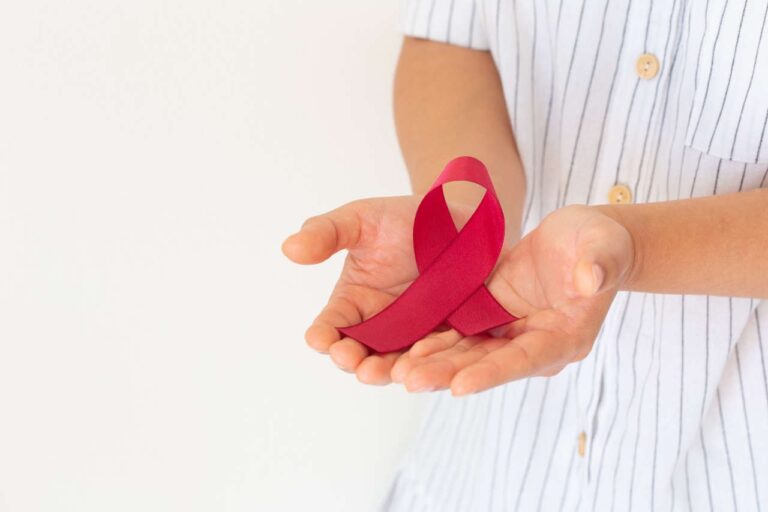
Bevacizumab (pronounced [be vuh SIZ uh mab]) is also known by the brand name, Avastin. Bevacizumab is currently only available as the brand Avastin, and there is no generic available. It also has two approved biosimilars called Zirabev and Mvasi. Bevacizumab is an antineoplastic (anti-cancer) drug that belongs to a class called vascular endothelial growth factor (VEGF) inhibitors, also known as an “anti-androgen treatment.” It is a type of chemotherapy and it is used to treat many different types of cancers, including colorectal, brain, cervical, hepatocellular, lung, and ovarian cancer. Avastin slows down the rate of growth of cancer cells by reducing their blood supply, which in turn diminishes the nutrition and oxygen supply of the cancer cells, therefore killing them.
What Is Chemotherapy?
Chemotherapy is a cancer treatment in which certain drugs are used to kill cancerous cells. These drugs are usually cytotoxic chemical substances that are toxic to the cells, restrict their growth, prevent their division, and ultimately kill the cells.
How Is Avastin Used?
Avastin has been approved by the Food and Drug Administration (FDA) to treat different types of cancers. It can be prescribed in combination with other chemotherapy agents, depending on the severity and type of cancer.
Available Formulations
Avastin is only available in the form of a solution for intravenous injection. In certain cases, this may be prescribed for intravitreal administration. Avastin solution contains polysorbate 80 and is available as single-use vials in two different strengths: 100 mg/4 ml or 400 mg/16 ml.
Directions for Use
Avastin should be diluted in 100 ml of normal saline prior to infusion. Do not use and discard if the solution in the vial appears cloudy, discolored, or contains particulate matter. Do not administer or mix with dextrose-containing solutions. Avastin is typically administered once every 2 or 3 weeks, depending on the reason for use.
The initial dose of the intravenous injection should be infused over 90 minutes, and the second infusion can be administered over 60 minutes if the initial dose is well tolerated. The third and any subsequent infusions may be administered over 30 minutes if the 60-minute infusion is well tolerated. Infusion time should not be less than 30 minutes. If Avastin is administered with other medications, consult with your provider on which medication should be administered first. In some cases, premedication may be required to prevent a side effect from happening.
Missed Dose
If a dose is missed, contact your physician immediately to reschedule.
Storage
Store intact vials in their original cartons in the refrigerator. Do not freeze or shake, and protect from light. Discard any unused portion of the vial after administration.
What To Avoid While Taking Avastin
While taking Avastin therapy, you must follow some precautions. Always tell your physician about any medications you are already taking. Do not take any drug or medicine (even herbals, vitamins, or over-the-counter medications) without prior consent from your physician or pharmacist. They may have some significant interactions with Avastin.
Pregnancy & Avastin
Pregnancy status must be checked prior to starting Avastin therapy in women of childbearing age. Effective contraception must be used during treatment and for 6 months after the last dose. Avastin may cause fetal harm and is therefore not recommended for women who are breastfeeding during therapy. Breastfeeding should also be avoided for at least 6 months after the last dose.
Side Effects

As with any other medication, you may encounter side effects while taking Avastin. A few things to remember are:
- You may not have all the side effects listed below. Many people may experience little to no side effects.
- The severity of side effects may vary from person to person, so don’t compare your side effects with other people’s experiences.
- Most of the side effects will improve when therapy is discontinued.
- These side effects are easily manageable most of the time, either by readjusting the dose of Avastin or using additional medications to treat the symptoms. Consult with your physician or pharmacist to explore available options.
- Do not hide any symptoms; if you feel any discomfort, do not hesitate to tell your physician or pharmacist about it.
Note: This is not a comprehensive list of all side effects. Talk to your doctor if you have questions.
Some of the more serious side effects of Avastin are listed below:
Cardiac Complications
There may be cardiac complications with the use of Avastin like hypertension, left ventricular heart failure (LVHF), or thromboembolism (can include heart attack or stroke). Hypertension can be managed with antihypertensive therapy. LVHF most commonly will be prevalent within the first 6 months of Avastin use but may be resolved after discontinuation of therapy.
Hemorrhage (Bleeding) or GI Effects
Bleeding can vary from mild or serious. More serious hemorrhage can include GI bleeding, vomiting blood, bleeding from the brain, nose bleeds, or vaginal bleeding. GI toxicity like GI perforation or fistulas may occur with Avastin use.
Kidney Complications
Avastin may cause kidney complications, leading to a condition called nephrotic syndrome. This is a syndrome where protein leaks out of the kidneys and is found in the urine. This can be detected by taking a urine test at the doctor’s office.
Vision Complications
Serious eye infections or vision loss is possible, especially with intravitreal administration. Complications can include retinal detachment, bacterial infections, or other conditions. If you experience vision loss, blurry vision, eye pain or discomfort, contact your physician immediately.
Injection Site Pain
The area where the medication is injected may feel sore for a few hours or days after the Avastin injection. This may also be accompanied by mild bruising, swelling, or redness at the injection site. These pains can be controlled using over-the-counter painkillers like Tylenol or Motrin, but usually, they will resolve on their own within a few days. Consult your doctor or pharmacist prior to starting any new therapies.
Dizziness, Fatigue, or Headache
Feelings of extreme tiredness, weakness, lack of energy, or fatigue may appear. These symptoms may occur suddenly and sometimes may not go away with rest. Light and regular exercise is recommended with adequate sleep. Start with simple activities like a normal walk and then gradually shift towards slow running and light jogging, etc. Fatigue may sometimes lead to falls or fractures. If fatigue symptoms become unmanageable or severe, inform your physician.
Bone, Joint, Back, and Muscle Pain
Another common side effect includes bone, joint, back, or muscle pain. Adequate rest and hydration may help reduce pain. Get physician approval prior to taking any over-the-counter medications for pain relief.
Posterior Reversible Encephalopathy Syndrome (PRES)
This condition is reversible and usually subsides within one week following discontinuation of therapy. Presentation of this condition includes feeling confused, lowered alertness, change in eyesight, loss of eyesight, seizures, or severe headache. If PRES manifests, it may be recommended to discontinue Avastin.
Osteonecrosis of the Jaw (ONJ)
Manifestations of ONJ may include jaw pain, osteomyelitis; bone erosion; tooth or periodontal infection; mouth sores; choking, coughing, or gagging while drinking; toothache; jaw pain; gingival ulceration or erosion; persistent jaw pain; or slow healing of the mouth or jaw after dental surgery.
Impaired Wound Healing
Wound healing complications can be dangerous when undergoing surgery. It is recommended to avoid Avastin use until at least 28 days after any surgery and until the wound is fully healed. If possible, it may be more appropriate to wait until at least 6 – 8 weeks after discontinuation for major surgical procedures. Impaired wound healing may potentially lead to a condition called necrotizing fasciitis (a rare bacterial infection that can spread rapidly throughout the body).
Infertility
There is a risk that Avastin may cause ovarian failure and impair fertility in females of reproductive potential, making it difficult to get pregnant.
Other common side effects may include:
- Abdominal pain or diarrhea
- Vomiting or upset stomach
- Loss of appetite or weight loss
- Change in taste, voice, or nails
- Insomnia
- Mouth irritation or mouth sores
- Dry skin
- Runny or stuffy nose
- Teary eyes
Precautions
Unless approved by your physician, Avastin is generally not recommended in:
- Patients with risk of cardiovascular events. These events can include a history of heart disease, high blood pressure, high amounts of fat or cholesterol in the blood (dyslipidemia), history of heart attack or stroke, etc. Avastin is known for potentially increasing blood pressure, leading to an increased risk of cardiovascular events taking place. Patients who are older than 65 or who have a history of diabetes or cardiac complications may be at an increased risk for these complications. If any of these events occur, discontinuation or decrease in dose may be warranted.
- Patients with posterior reversible encephalopathy syndrome (PRES). PRES is a neurological disorder and may present as headache, seizure, lethargy, confusion, blindness, and other visual/neurologic symptoms with possible hypertension. Diagnosis of PRES can be confirmed by MRI, and if confirmed, it is recommended to discontinue Avastin immediately.
- Patients with history of serious GI effects or hemorrhage. Serious GI effects may include GI perforation, fistulas, or variceal bleeds within 6 months. Most cases of GI toxicity arise within 6 months of Avastin use. If GI toxicity or hemorrhage manifests, it may be recommended to withhold or discontinue Avastin.
- Patients with kidney complications. Patients with kidney complications may be at a higher risk for hypertension or nephrotic syndrome. If this condition arises, it may be recommended to discontinue Avastin. It may take 6 – 12 months for this condition to resolve after discontinuation.
- Patients with impaired wound healing or necrotizing fasciitis. It is recommended to avoid Avastin use until at least 28 days after any surgery and until the wound is fully healed. For major surgical procedures, it may be more appropriate to wait at least 6 – 8 weeks before restarting Avastin. Discontinuation of Avastin may be recommended if a serious event occurs.
FAQs
Is Avastin a chemo agent?
Chemo drugs are those that are used in the management of various cancers. Avastin kills the cancer cells. Thus, it is a chemo agent that is advised as a treatment option for various cancer patients.
How should Avastin be taken?
Avastin should be diluted in 100 ml of normal saline prior to infusion. Avastin is typically administered once every 2 or 3 weeks, depending on the reason for use. Infusion time should initially start at 90 mins, and if well tolerated, it can be reduced to 60 minutes. If it is still well tolerated, it can then be reduced to 30 minutes. Infusion time should not be less than 30 minutes.
Can Avastin be used to treat conditions other than cancer?
Yes, it is used to treat eye disorders such as wet age-related macular degeneration (AMD), diabetes-related eye disorders, and other issues related to the retina. When injected into the eye, Avastin has been shown to slow down vision loss associated with these disorders. The use of Avastin to treat certain eye diseases is considered “off-label” use and is approved in this capacity by the Food and Drug Administration (FDA).
REFERENCES:
- Bevacizumab. In: Lexi-drugs online [database on the Internet]. Hudson (OH): Lexicomp, Inc.; 2016 [updated 16 Jan 2022; cited 20 Jan 2022]. Available from: http://online.lexi.com.
- Bevacizumab. In: In Depth Answers [database on the Internet]. Greenwood Village (CO): IBM Corporation; 2017 [cited 2022 Jan 20]. Available from: www.micromedexsolutions.com.
- Avastin: Uses, dosage, side effects, warnings. Drugs.com. (n.d.). Retrieved January 20, 2022, from https://www.drugs.com/Avastin.html.
- How is Avastin (Bevacizumab) given? Avastin. https://www.avastin.com/patient/rgbm/treatment/infusions.html. Published 2022. Accessed January 27, 2022.












